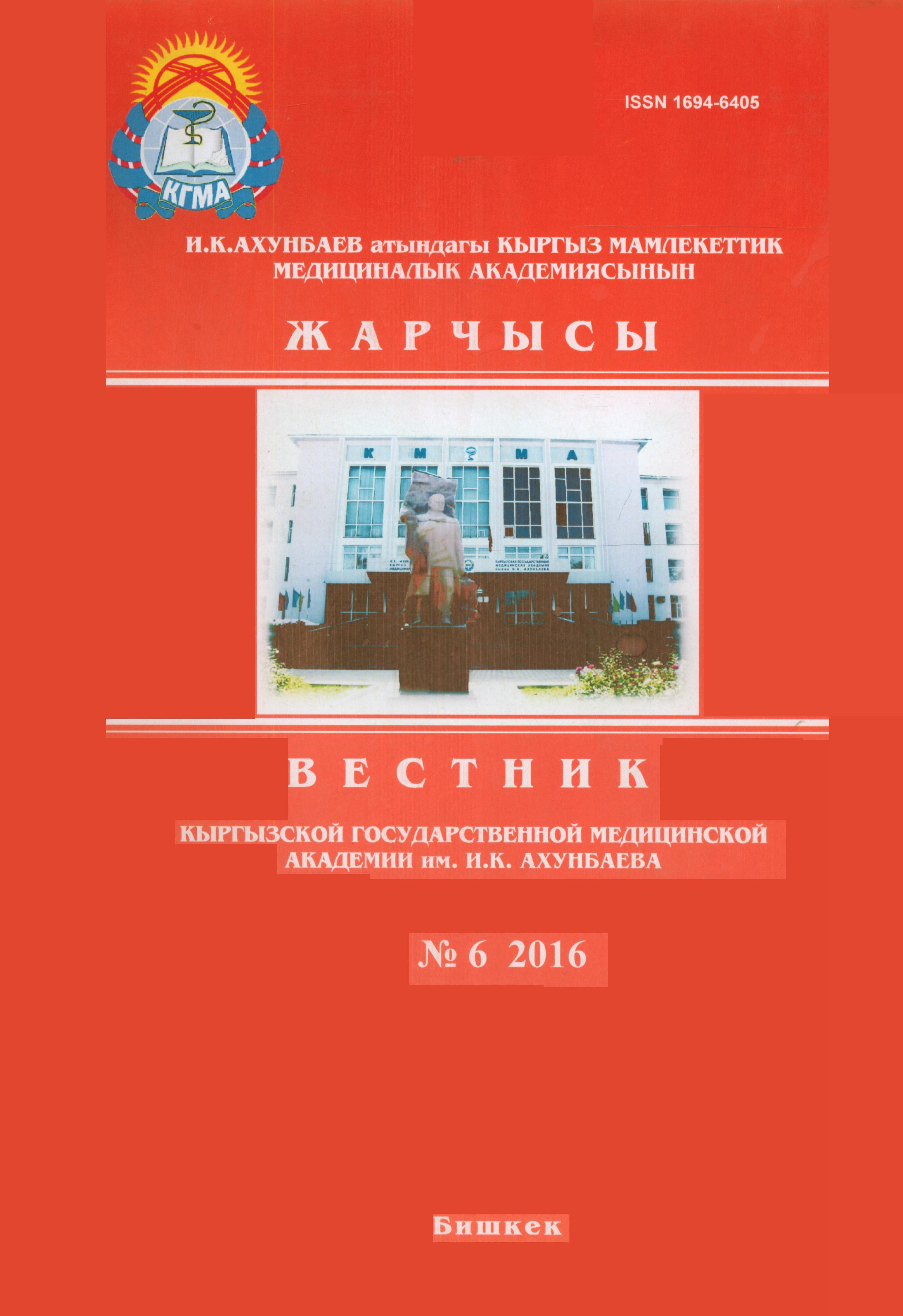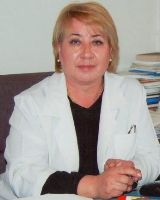NATURAL HISTORY, INDICATIONS AND TIME OF CORRECTION OF SECUNDUM ATRIAL SEPTAL DEFECT
Abstract
There were many studies about the natural history of atrial septal defect (ASD) after introduction of non-surgical treatments. The natural history of ASD is favorable, but it was showed that the defect increased in diameter by time. The degree of shunting is determined by the size of the defect and the compliance of interatrial septum. This leads to the thinning the edges of the defect, in some cases there were disappearing of the edges, as a result it was changed the morphology. It was necessary to know that large defects without edges couldn’t be closed by non surgical methods. This shows that the monitoring on ECHO of all defects was necessary during 18-24 months after diagnosis.
Keywords:
atrial septal defect, natural history, monitoring, ECHO.References
1. Hoffmann JIE. Congenital heart disease. Ped Clin North Am 1990;37:45-48.
2. Feldt R.H., Avasthey P., Yoshimasu F., Kurland L.T., Titus J.L. Incidence of congenital heart disease in children born to residents of Olmsted Country, Minnesota, 1950-1969. Mayo Clin Proc 1971;46:794-799.
3. Leachman R.D., Cokkinos D.V., Cooley D.A. Association of ostium secundum atrial septal defects with mitral valve prolapse. Am J Cardiol 1976;38:167-169.
4. Белоконь Н.А., Подзолков В.П. Врожденные пороки сердца. – М.: Медицина, 1991. - 350с.
5. Парийская Т.В., Гикавый В.И. Врожденные пороки у детей и их фармакотерапия – Кишинев: Штиинца,1989. - 213с.
6. Мутафьян О.А. Врожденные пороки сердца у детей - Санкт-Петербург: СПб Невский Диалект, 2002. – 330 с.
7. Ascah KJ, King ME, Gillam LD, Weyman AE. The effects of right ventricular hemodynamics on left ven-tricular configuration. Can J Cardiol 1990;6(3):99-106.
8. Walker RE, Moran AM, Gavreau K, Colan SD. Evidence of adverse ventricular interdependence in patients with atrial septal defects. Am J Cardiol 2004;93:1374-1377.
9. Brochu MC, Baril JF, Dore A, et al. Improvement in exercise capacity in asyptomatic and mildly symptomatic adults after atrial defect percutanеous closure. Circulation 2002; 106: 1821-1826.
10. Giardini A, Donti A, Formigari R, et al. Determinants of cardiopulmonary functional improvement after transcatheter atrial septal defect closure in asymptomatic adults. J Am Coll Cardiol 2004;43:1886-1891.
11. Бураковский В.И., Бухарин В.А., Подзолков В.П. и др. Сердечно-сосудистая хирургия. Под ред. В.И.Бураковского и Бокерия Л.А. – М.: Медицина,1996 - 760с.
12. Johnson M.C., Sekarski T.J., Balzer D.T. Echocardiographic prediction of left-to-right shunt with atrial septal defects. J Am Soc Echocardiogr 2000; 13 (11):1038-1042.
13. Chen C., Kremer P., Schroeder E. et al. Usefulness of anatomic parameters derived from two-dimensional echocardiography for estimating magnitude of left to right shunt in patients with atrial septal defect. Clin Cardiol 1987;10:316-321.
14. Radzik D., Davignon A., van Doesburg N. et al. Predictive factors for spontaneous closure of atrial septal defects diagnosed in the first 3 months of life. J Am Coll Cardiol 1993;22:851-853.
15. Brassard M., Fouron J.C., van Doesburg N. et al. Outcome of children with atrial septal defect considered to small for surgical closure. Am J Cardiol 1999;83:1552-1555.
16. Helgason H., Jonsdottir G.. Spontaneous closure of atrial septal defects. Pediatr Cardiol 1999;20:195-199.
17. Azhari N., Shihata M.S., Al-Fatani A. Spontaneous closure of atrial septal defects within the oval fossa. Cardiol Young 2004:14 (2):148-155.
18. Mc Mahon C.J., Feltes T.F., Fraley J.K. et al. Natural history of growth of secundum atrial septal defects and implications for transcatheter closure. Heart 2002;87:256-259.
19. Prokselj K., Kozelj M., Zadnik V., Podnar T. Echocardiographic characteristics of secundum-type septal defects in adult patients: implications for percutaneous closure using Amplatzer Septal Occuders. J Am Soc Echocardiogr 2004;17:1167-1172.
20. Saxena A., Divekar A., Soni N.R.. Natural history of secundum atrial septal defect revisted in the era of transcatheter closure. Indian Heart J 2005;57:35
21. Hartmann A.F., Elliott L.P. Spontaneous physiologic closure of an atrial septal defect after infancy. Am J Cardiol 1967;19:290-292.
22. Fukasawa M., Fukushige J., Ueda K. Atrial septal defect in neonates with reference to spontaneous clo-sure. Am Heart J 1988;116:123-127.
23. Giardini A.C., Raptoulis A.S., Engle M.A., et al. Spontaneous closure of atrial septal defect with cardi-ac failure in infancy. Chest 1979;75:395-397.
24. Cockerham J.T., Martin T.,C., Gutierrez F.R. et al. Spontaneous closure of atrial septal defect in infants and young children. Am J Cardiol 1983;52:1267-1271.
25. Cayler G.G. Spontaneous functional closure of symptomatic atrial septal defects. N Engl J Med 1967;276:65-73.
26. Brand A., Keren A., Branski D.et al. Natural course of atrial septal aneurysm in children and the potential for spontaneous closure of associated septal defect. Am J Cardiol 1989;64:996-1001.
27. Awan I.H., Rice R., Moodie D.S. Spontaneous closure of atrial septal defect with interatrial aneurysm formation. Documentation by noninvasive studies, including digital substraction angiography. Pediatr Cardiol 1982;3:143-145.
28. Hanslik A., Pospisil U., Salzer-Muhar U.et al. Predictors of spontaneous closure of isolated secundum atri-al septal defect in children: a longitudinal study Pediatrics 2006;.118(4):1560-1565.
29. Tortoriello T.A., McMahon C., Kovalchin J.P., Grifka R.G. Growth of an atrial septal defect: missing the window for transcatheter closure. Pediatr Cardiol 2002;23:542-544.
30. Murphy J.G., Gersh B.J., McGoon M.D. et al. Long term outcome after surgical repair of isolated atrial septal defect. Follow-up at 27 to 32 years. N Engl Med 1990;323:1645-1650.
31. King TD, Thompson SL, Steiner C, Mills NL. Secundum atrial septal defects. Nonoperative closure during cardiac catheterization. JAMA 1976;235:2506-2509.
32. Mills NL, King TD. Nonoperative closure of left-toright shunts. J Thorac Cardiovasc Surg 1976;72:371-378.
33. Sideris EB, Rao PS. Transcatheter closure of atrial septal defects: role of buttoned devaices. J Invasive Cardiol 1996;8:289-296.
34. Mashura J., Gavora P., Hijazi Z.M., et al. Transcatheter closure of secundum atrial septal defects using the new self-centering Аmplatzer septal occluder: Initial human experience. Cathet Cardiovasc Diagn. 1997;42:388-393.
35. Thanopoulos B.D., Laskari C.V., Tsaousis G.S. et al. Closure of atrial septal defects with the Amplatzer occlusion device: preliminary results. J Am Coll Cardiol 1998;31:1110-1116.
36. Mazic U., Gavora P., Mashura J. The role of transesophageal echocardiography in transcatheter closure of secundum atrial septal defects by the Amplatzer Septal Occluder. Am Heart J 2001;142:482-488.
37. Allen H.D., Beekman R.H 3rd., Garson A. J. et al. Paediatric therapeutic cardiac catheterization: a state-ment for healthcare professionals from the Council on Cardiovascular Disease in the Young, American Heart Association. Circulation 1998; 97: 609-625.
38. Smith B.G., Qureshi S.A. Paediatric follow-up of hemodynamically insignificant congenital cardiac lesions. J Paediatr Child Heart 2012; 48(12):1082-1085.
39. Lakhdhar R., Drissa M., Drissa H. natural history of atrial septal defect in the sixth decade: study oa 5 cas-es. Tunis Med. 2013; 91(4):243-247.
40. Paiva L., Dinis P., Providencia R. et al. Percutaneous patent foramen ovale closure: the paradoxical cerebral embolism prevention registry. Rev Port Cardiol. 2015; 34(3):151-157.



